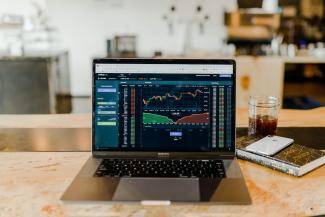
Market Update for December 12, 2022
On July 20, 2022 I wrote in this blog, “I previously wrote about how the S&P 500 seemed to be holding the 4,070 area, and we remain around 100 points or 2.75% below that figure.” We are TODAY, as I write this midday on December 12, 2022, at 3,956 on the S&P 500 - almost exactly where we were on July 20th! Broadly, the stock market lost money in the first two quarters this year and has moseyed around the same levels for 6+ months. U.S. Treasury bonds have actually had a good 4th quarter - rates are off their recent peak - but struggled badly in the 3rd quarter after a similarly bad first two quarters. For bonds generally, this is the worst year in several decades, and as of October 1, 2022 was historically even worse than that. For stocks, the first half of the year was nasty, but we are above the lows and might be building some momentum into 2023.
That brings us to the value vs. growth debate I have posited many times in this and other forums. The Russell 1000 Large-Cap Value ETF is down 7.17% year-to-date as I am writing this, whereas the Russell 1000 Large-Cap Growth ETF is down 26.26%. I have favored value stocks over growth stocks in asset allocation decisions for the vast majority of 2022, as nearly all of my trades have been to sell growth and buy value, broadly, but in retrospect I wish I had been even earlier and more heavy-handed on this trade. At some point in the future, value will fall out of favor and growth will take the lead. When that happens I would also be more open to investing in smaller-cap stocks, as those tend to be another “risk on” trade. For the time being, though, I think client portfolios are generally best positioned in large-cap U.S. value, especially insofar as their higher-dividend yield tends to insulate some of the downside volatility.
The S&P 500 is a basket of the 500 largest companies that trade on a US stock exchange. Large foreign companies like Nestle, Novartis, and Toyota Motors are not constituent parts of the S&P 500 as their companies are domiciled elsewhere. I noted several blog posts ago that the top 10 companies within the S&P 500 only had 2 value-leaning stocks, whereas 8 were growth-leaning. But as time marches on the % of each company in the S&P 500 change, so it is worthwhile to look at that again now. Value has outperformed as noted above, so we would expect a shakeup in the top holdings for the S&P 500- and that is exactly what we find. Tech companies still are the top 4 in descending order (Apple; Microsoft; Google/Alphabet; Amazon), but then Berkshire Hathaway and UnitedHealth Group are #5 and #6, respectively, with Johnson & Johnson checking in at #8 and Exxon Mobil #9 (I am adding the two Alphabet positions together, as one should). JP Morgan #11 and Procter & Gamble #12 are clear value-stocks. This index, like most indices, is market capitalization-weighted, so the largest holdings have an outsized impact on index performance. In fact, Apple and Microsoft alone represent over 12% of all monies invested in the S&P 500, whereas only Alphabet and Amazon are the only two other companies with a weighting above 2%. After those top 4 companies, there is considerable exposure to value stocks within the S&P 500, and that exposure has increased substantially this year as value-stocks have outperformed so handily.
The key takeaway is that the S&P 500 always has the same name and is most frequently cited as the broadest measure of the US stock market, but its innards change substantially over time. While still dominated by growth stocks as its 4 biggest exposures, more value names are working their way up the percentage leaderboard (If you are interested to explore further, here is a recent article looking at historical S&P 500 index weights by sector. And here is another take on this interesting topic going back even further in the past).
One last point for 2022, as what I am about to say requires a bit of homework, so with only 14 trading days left in the year you might want to act now. I am not a tax professional and please do not take this as tax advice, but of course my areas of expertise in investing brush up against that topic frequently. IRA and 401(k)-type accounts are likely down from their highs, but I do not know of a tax-strategy to potentially take advantage of said losses. That is not the same for non-qualified or “regular money” accounts. If you have lost money on a non-qualified stock or mutual fund or ETF or bond investment you may want to consider selling that position to claim a tax loss. That loss can potentially offset future capital gains within the same type of investment, as losses can be carried forward in this arena. At the very least, you are permitted to take $3,000 as an “above the line” tax deduction per year, indefinitely (this has been the amount allowed for my entire career- it has never been indexed for inflation, unfortunately). I am here to discuss your personal situation on this topic, or if matters are more complicated I can refer you to a CPA for help. Here is an article from Schwab written in 2021 on some of the specifics related to this topic. Here is another.

